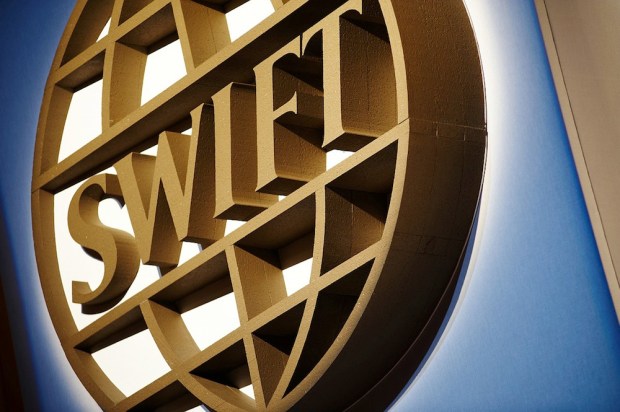B2B Payments, SWIFT And In The Cloud

B2B transactions are complex, especially across borders. Technology can help salve the pain points of information flow needed across an increasingly regulated landscape. Speed and transparency are critical components of SWIFT’s gpi system serving banks and corporates, Stanley Wachs, global head of Bank Engagement, tells PYMNTS, in an update on the recently-debuted services.
Friction abounds in the world of B2B payments, especially amid international payments across far-flung supply chains.
Streamlining the flow of information sent along with funds remains critical, but doing business in different countries carries a set of procedural, administrative and security hurdles that demand new ways of interaction. To that end, SWIFT debuted its global payments innovation initiative (gpi) earlier this year, a solution which looks to boost the infrastructure underpinning the movement of money on a global scale.
This year’s launch encompasses phase one, geared toward B2B payments, while a second phase will look to further digitization efforts and a third will focus on emerging technologies such as those tied to distributed ledgers.
In an interview with PYMNTS, Stanley Wachs, global head of bank engagement at SWIFT, said SWIFT’s gpi represents a “completely new service for the banking industry,” one that is focused on corporate customers.
About two years ago, SWIFT observed that the correspondent banking model — the traditional bank to bank international money transfer model — showed several inefficiencies, Wachs said. Payments were slow, could take days to settle and “there was no cost transparency nor possibility to track a payment,” he told PYMNTS.
In signing on with gpi, banks have agreed to disclose their fee structures, allowing “treasurers to better manage their transactions,” according to Wachs.
Mixing the wrong payment information often leads to friction in the payments process, with a majority of discrepancies tied to information about beneficiary banks — transparency gaps he maintained are well-addressed by gpi.
In terms of mechanics, the company has said gpi works across business rules captured in multilateral service level agreements (SLAs) between participating banks. Participation in gpi is open to any supervised financial institution that agrees to comply with its business rules.
Payments monitoring and tracking are done through the SWIFT gpi Tracker, a cloud-based tracking database through which banks track funds from their send time to the time of their receipt by the beneficiary’s account. Transactions are settled the same day, an improvement over previous timeframes. Such transparency can be especially useful with critical payments, typically defined as large amounts paid out in a single transaction as funds tied to an M&A transaction, in one example Wachs presented.
As part of gpi’s second phase slated for 2018, the service will offer a “richer data experience,” Wachs said. Data transferred along with payments will include invoices or compliance documents. Banks also will be able to immediately stop or recall payments no matter where those payments are in the correspondent banking chain.
This information, conveyed in the cloud, replaces what Wachs said are long-standing “clumsy” manual and email-based processes prevalent in legacy payments models. The third phase will explore new and emerging technologies, such as distributed technologies.
Thus far, gpi has the participation of 120 banks in more than 200 countries, representing more than 75 percent of SWIFT’s cross-border transactions and 2 million messages as of September. Roughly two dozen banks are live in the system and active in their use of gpi.
Noting that APIs are part of gpi’s Tracker technology, Wachs said the company is “encouraging third-party application vendors to develop overlay services on top of the gpi platform” using the API.
